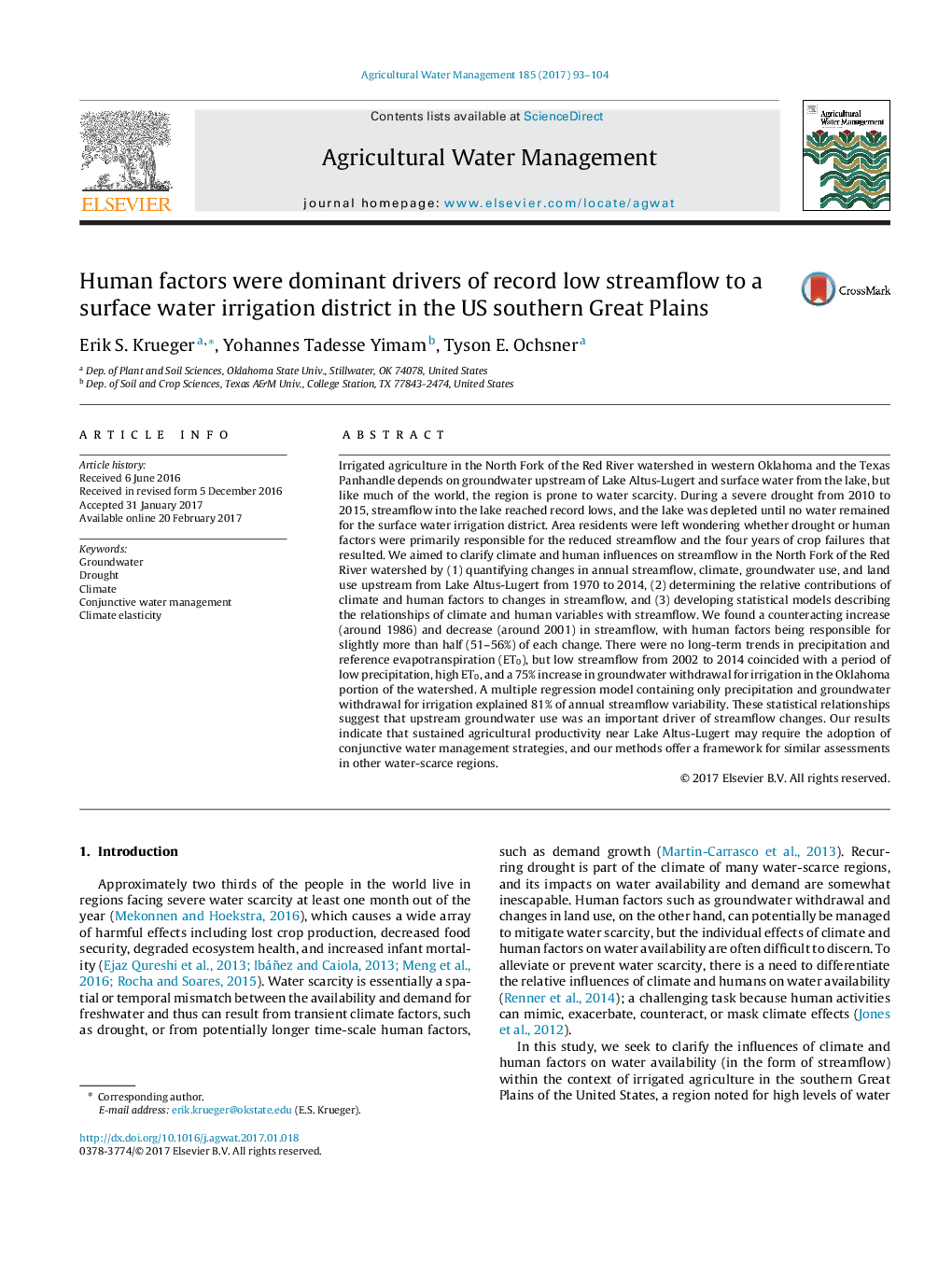| کد مقاله | کد نشریه | سال انتشار | مقاله انگلیسی | نسخه تمام متن |
|---|---|---|---|---|
| 5758520 | 1622895 | 2017 | 12 صفحه PDF | دانلود رایگان |
- Streamflow increased around 1986 and decreased around 2001.
- Human factors were responsible for 51-56% of each of these changes.
- Oklahoma groundwater use for irrigation increased 0.16 million m3Â yrâ1.
- Precipitation and groundwater use explained 81% of annual streamflow variability.
- Statistics suggested groundwater-surface water interactions drive streamflow.
Irrigated agriculture in the North Fork of the Red River watershed in western Oklahoma and the Texas Panhandle depends on groundwater upstream of Lake Altus-Lugert and surface water from the lake, but like much of the world, the region is prone to water scarcity. During a severe drought from 2010 to 2015, streamflow into the lake reached record lows, and the lake was depleted until no water remained for the surface water irrigation district. Area residents were left wondering whether drought or human factors were primarily responsible for the reduced streamflow and the four years of crop failures that resulted. We aimed to clarify climate and human influences on streamflow in the North Fork of the Red River watershed by (1) quantifying changes in annual streamflow, climate, groundwater use, and land use upstream from Lake Altus-Lugert from 1970 to 2014, (2) determining the relative contributions of climate and human factors to changes in streamflow, and (3) developing statistical models describing the relationships of climate and human variables with streamflow. We found a counteracting increase (around 1986) and decrease (around 2001) in streamflow, with human factors being responsible for slightly more than half (51-56%) of each change. There were no long-term trends in precipitation and reference evapotranspiration (ET0), but low streamflow from 2002 to 2014 coincided with a period of low precipitation, high ET0, and a 75% increase in groundwater withdrawal for irrigation in the Oklahoma portion of the watershed. A multiple regression model containing only precipitation and groundwater withdrawal for irrigation explained 81% of annual streamflow variability. These statistical relationships suggest that upstream groundwater use was an important driver of streamflow changes. Our results indicate that sustained agricultural productivity near Lake Altus-Lugert may require the adoption of conjunctive water management strategies, and our methods offer a framework for similar assessments in other water-scarce regions.
Journal: Agricultural Water Management - Volume 185, 1 May 2017, Pages 93-104
